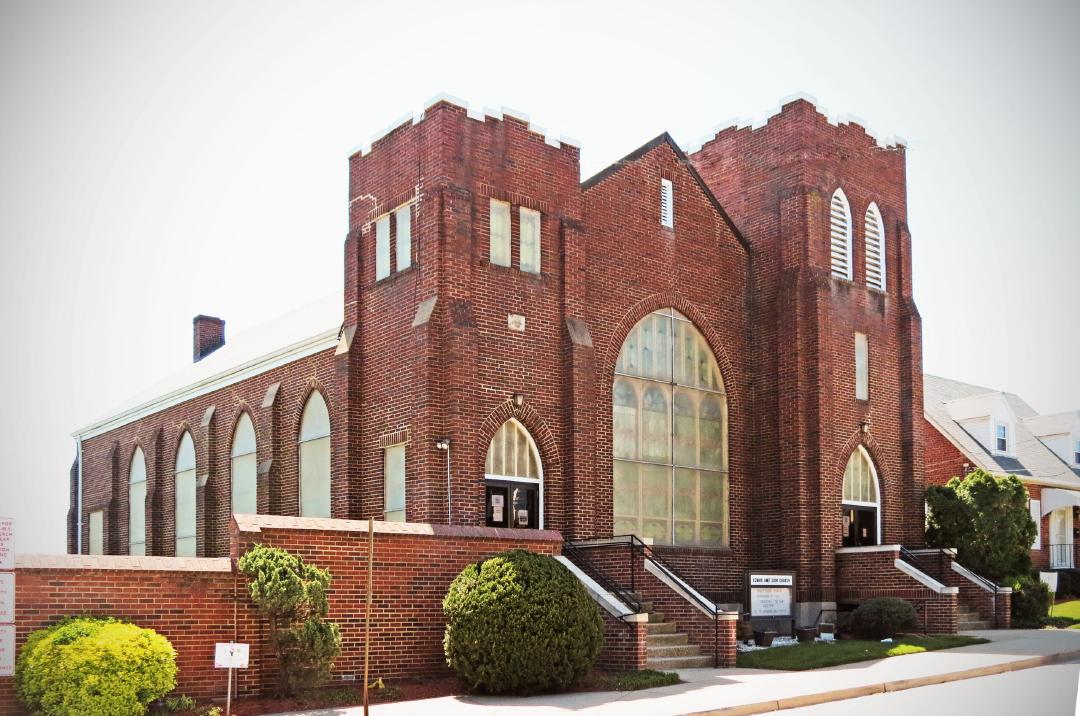Lomax African Methodist Episcopal Zion Church

The Lomax African Methodist Episcopal (AME) Zion Church was built in 1922 and is the oldest African American church in Arlington.
The Lomax African Methodist Episcopal (AME) Zion Church was built in 1922 and is the oldest African-American church in Arlington. In 1963, when Martin Luther King, Jr. led the March on Washington and delivered his famous “I Have a Dream” speech, he also visited Arlington. King delivered a speech in the parking lot of the Lomax AME Zion Church in what would forever be a historical highlight for the Nauck community and the church’s congregation.
The Wesley Zion Church was established in Freedman’s Village in 1863. It was known as Little Zion Church before being renamed Lomax AME Zion Church. The existing building at 24th Road South is the third AME Zion Church.
Before being forced out of Freedman’s Village, church members found a new church site in the area now called Nauck, and the property was purchased for $75 in 1874. Many African Americans leaving Freedman’s Village in the 1880s and 1890s chose to reside in the Nauck community where Little Zion Church was already established. In 1887, the church minister, Reverend J.S. Waters, urged the congregation to build a new church to replace the relocated Freedman’s Village structure. Two years later, the new Lomax Chapel of the AME Zion Church was completed and ready for use.
Just 30 years later, Reverend F.R. Killingsworth, minister of Lomax Chapel between 1919 and 1928, proposed a new church building. In 1921, the church's trustees voted unanimously to deed the property on 24th Road South. The brick foundation for the new church was laid in 1922, and within the first year of construction, the basement was completed, and services were moved into the partially completed building. Members of the congregation were responsible for its construction. Three members of particular note are Thomas West, the carpenter; Leonard Gray, the bricklayer; and Willard Gant, who was responsible for the footings of the new church.
Church ministers throughout the 20th century included Reverend Callis (1933-1946), Reverend Diggs (1946-1948), Jackson A. Browne (1948-1955) and Reverend Arthur W. Walls (1960-1974).
The African Methodist Episcopal Zion Church was formally recognized in 1796 in New York City after the founders seceded from the John Street Methodist Episcopal (ME) Church in Manhattan to create a meeting group separate from the white church. The licensed preachers of the new church were not ordained ministers and thus were not allowed to provide services. Instead, white ministers were asked to preach to their congregation. In 1822, three black ministers were ordained by white Methodist elders, including James Varick, one of the new church’s most notable leaders, who became the first AME bishop. In 1848, the General Conference of the African Methodist Episcopal Church added the word Zion to their church.
Today, over 3,000 churches across five continents belong to the AME Zion denomination, with an active membership of 1.5 million. The AME Zion Church also started several colleges, including Livingstone College (affiliate Hood Theological Seminary), Lomax Hannon Junior College in Alabama, Clinton Junior College in South Carolina, Dinwiddie Institute in Virginia, and AME Zion Junior College in Monrovia, Liberia.
The Lomax AME Zion Church was constructed in the Gothic Revival style about 50 years after the height in popularity of the style. The Gothic Revival style remained popular in church design through the early 20th century. Standard forms and details of the style include brick or ashlar construction, a rectangular nave with projecting transepts or towers, buttresses, and omnipresent pointed-arch openings.
The church is one-story high, supported on a concrete foundation, with a brick structural system capped by an asphalt-shingled front-gable roof. The north elevation features a front gable with two unequal-size towers and a large center lancet-arched window. Each tower contains a double-leaf entry into the first floor. A two-story education building was added in 1966. Two contributing resources are a cemetery from around 1894 and a parsonage built in 1951.
The basilica-type floor plan comprises two entry foyers separated from the sanctuary. Access into the sanctuary is through double-leaf, five-paneled wood doors. A center aisle and two side aisles divide the rows of pews in the nave. A set of ascending stairs provides access to the altar, which consists of an altar rail, pulpit, and the choir.
On the west side of the church is a one-and-a-half-story parsonage. Built in 1951, this building is a Colonial Revival-style Cape Cod house. Rising above the side-gable asphalt-shingle roof is one exterior-end brick chimney. The facade is pierced with two double-hung wood-sash windows that are visibly supported with soldier lintels and rowlock sills. This building replaced an earlier parsonage built in 1912.
The church cemetery contains approximately 107 interments of church members, indicated by the decipherable markers dating from 1894 to 1982. Unmarked graves and deteriorated markers may date before 1894. The headstones and footstones are made of marble, limestone, and sandstone. Several of the buried include residents from Freedman’s Village, founding members of Wesley Zion Church, and their ancestors. Sarah Ann Jones, the wife of Levi Jones, an important figure in establishing the beginnings of the Lomax Church in Nauck, died in 1915 and is buried in the cemetery with her two children, Mary and Isaac.
Images
